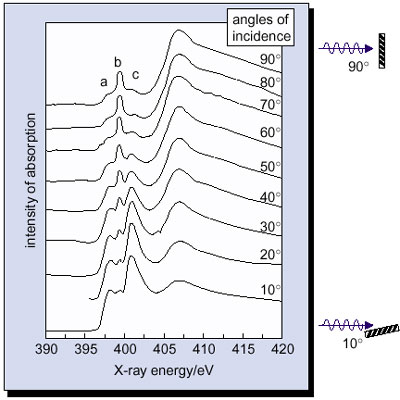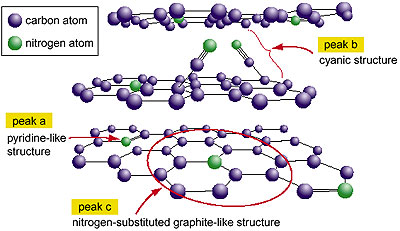In the last decade, carbon nitride (CNx) has emerged as a highly attractive material because of its prospective physical and electronic properties, e.g., hardness greater than diamond and an expected semi-conducting character for nanometer layers of CNx. In spite of theoretical predictions of many kinds of crystal phase and considerable effort to synthesize CNx films, the problem of what kinds of structure can exist in practice has not been successfully explored. Since most of the CNx films synthesized are non-stoichiometric and amorphous, where some local structures are included randomly and long-range order is lacking, the diffraction method is not adequate for exploring the structural possibilities for this system. Synchrotron radiation (SR) is a powerful tool for studying complex systems such as this. One of the features of SR, i.e., a continuous spectrum, makes it possible to probe specific elements in the system. For example, near-edge X-ray absorption fine structure (NEXAFS) data obtained using SR reveals the chemical environment of the local structures around a specific element. Furthermore, the linear polarization feature of SR gives additional information about the orientation of local structures.
Figure 8-5 shows the polarization dependence of nitrogen NEXAFS spectra of CNx films synthesized by means of nitrogen-ion implantation in graphite. From the behavior of the peaks a, b and c, the orientations of the corresponding local structures are clarified. These peaks have revealed the existence of a graphite-like structure in which carbon atoms are substituted by nitrogen atoms (Fig. 8-6). A semiconducting property for this graphite-like CNx crystal is predicted theoretically, and further, one expects there to exist ultra-thin semiconductor films owing to the crystal's two-dimensional, highly anisotropic structure. |


